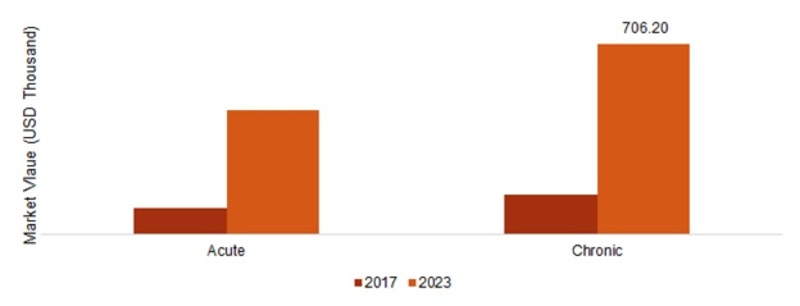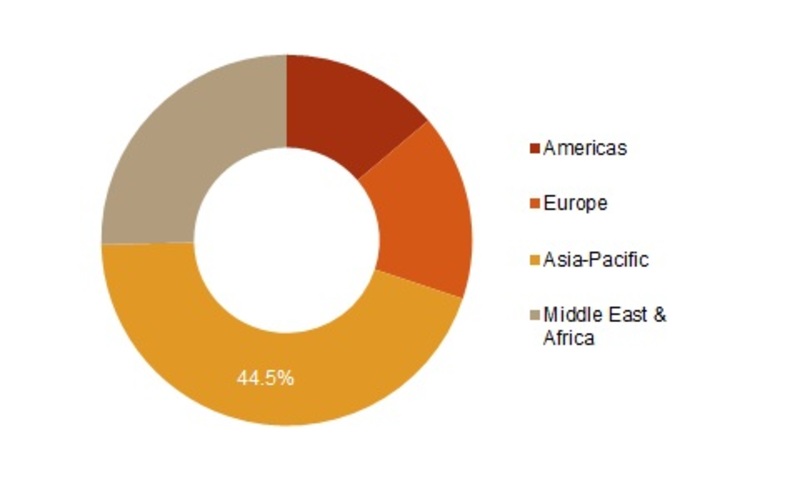Certified Global Research Member


Key Questions Answered
- Global Market Outlook
- In-depth analysis of global and regional trends
- Analyze and identify the major players in the market, their market share, key developments, etc.
- To understand the capability of the major players based on products offered, financials, and strategies.
- Identify disrupting products, companies, and trends.
- To identify opportunities in the market.
- Analyze the key challenges in the market.
- Analyze the regional penetration of players, products, and services in the market.
- Comparison of major players’ financial performance.
- Evaluate strategies adopted by major players.
- Recommendations
Why Choose Market Research Future?
- Vigorous research methodologies for specific market.
- Knowledge partners across the globe
- Large network of partner consultants.
- Ever-increasing/ Escalating data base with quarterly monitoring of various markets
- Trusted by fortune 500 companies/startups/ universities/organizations
- Large database of 5000+ markets reports.
- Effective and prompt pre- and post-sales support.
Coxiella burnetii is the bacterium that causes Q fever, a zoonotic infection mainly transmitted from animals to humans. As we delve into the market dynamics of Q Fever, it's crucial to understand the various factors shaping its landscape. The market for Q fever is influenced by both epidemiological and economic considerations. Q Fever incidence varies worldwide with high livestock farming regions having more cases reported. Notably, Australia has been an important epicenter of Q Fever owing to its large scale sheep and cattle husbandry practices.
One of the primary market drivers is increasing awareness and diagnosis of Q Fever. Increasing healthcare awareness leads to more cases being captured and documented. This has boosted demand for diagnostic tools and testing kits leading to increased growth of the Q fever diagnostics market. Furthermore, governments in partnership with health organizations are investing heavily on public health campaigns which educate communities on preventive measures thus expanding the market even further.
Healthcare infrastructure together with regulatory environment play a pivotal role in shaping the dynamics within the Q Fever market. Regions having strong healthcare systems tend to diagnose and manage Q Fever better than most others might be able to do so effectively as well .This directly affects the sector through influencing adoption of sophisticated diagnostic technologies alongside treatment options available .Regulatory frameworks also influence the development as well as commercialization process associated with products related to Q Fevers thereby informing market trends.
Involvement by pharmaceutical industry represents one other significant aspect of these dynamics in this particular trade. Research and development efforts concerning antimicrobial drugs are ongoing despite absence of any specific therapy for q fever at present.The pharmaceutical industry’s interest in addressing unmet medical needs associated with q fever may have substantial effect on market dynamics.Collaborations between pharmaceutical companies, research institutions, and government bodies can accelerate the development of novel therapeutics for Q Fever.
Economic burden of q fever also shapes Market Dynamics since there involves direct and indirect costs such as on healthcare services, productivity losses on one hand and veterinary interventions on the other hand. As a result, there is a growing emphasis on cost-effective preventive measures, such as vaccination programs for at-risk populations and livestock.
Globalization and international trade play a role in the spread of Q Fever and influence market dynamics. The movement of animals and their products can lead to transmission of the bacterium hence affecting how widely q fever occurs in different areas. This interconnectedness underscores the need for collaborative efforts on a global scale to address the challenges posed by Q Fever.
Emerging technologies and innovations also contribute to the market dynamics of Q Fever. Advances in diagnostic tools such as molecular techniques along with serological assays have increased accuracy and efficiency in diagnosing Q fever. Additionally, ongoing research into vaccine development as well as therapeutic modalities can reshape the market landscape providing new avenues for intervention or control in this direction.
Q Fever Market Highlights:
Q fever market Overview
The Q Fever market is anticipated to reach USD 4213.38 Million by 2030 at 4.60% CAGR during the forecast period 2022-2030. Some of the protuberant drivers supporting the growth of the Q fever market are identified as growth in the prevalence of chronic diseases and the increasing number of patients suffering from various bacterial infections.
The rising prevalence of Q fever coupled with increasing Q fever hospitalization rates, rising worldwide cattle, sheep, and goat population, growth in the risk factors of Q fever, and globally growing geriatric population are expected to drive the Q fever market in coming years.
Synopsis/Market Dynamics
Q fever is a bacterial infection caused by the bacteria Coxiella (C.) burnetii. C. burnetii has a reservoir in birds and mammals, especially cattle, sheep, and goats, and is most often an occupational disease affecting farmers, veterinarians, and slaughterhouse workers. The Q fever infection, mostly chronic Q fever is severe with complications including endocarditis, encephalitis, pneumonia, hepatitis, and splenomegaly requiring hospitalization. As per the data provided by the Centers for Disease Control and Prevention (CDC), between 2002 and 2014, the Q fever hospitalization rates were increased from 25.0% to 68.0%. In the US, the prevalence of Q fever was high in four states, namely, California, Texas, Colorado, and Illinois. Additionally, in 2014, the highest incidence rate of Q fever which was at least 1.0 case per million persons was found in Arizona, Arkansas, Colorado, Idaho, Montana, Nebraska, North Dakota, Oregon, South Dakota, Utah, and West Virginia. Moreover, according to the European Centre for Disease Prevention and Control (ECDC), in 2016, 1,102 cases of Q fever were reported in the European Union (EU)/European Economic Area (EEA), out of which 1,058 (96%) were confirmed.
Q fever Market Revenue, by Type, 2017 & 2023 (USD Mn)

Segmentation
Global Q fever, by type, segmented into acute and chronic. Chronic is the leading segment, which is growing at the highest CAGR to reach USD 706.20 thousand during the forecast period. Chronic Q fever is a life threating problem and causes damage to the heart, lungs, liver, brain, and could cause diabetes as well. The major share of the chronic segment is attributed to its high prevalence.
Based on diagnosis, Q fever market is segmented into serology tests and others. The serology tests account for major share with 8.32% CAGR during the forecast period. Under the serology test, Q fever is diagnosed through antibody blood tests, polymerase chain reaction (PCR) tests, immunoperoxidase staining, complement fixation, enzyme-linked immunosorbent assay (ELISA) tests, and other molecular tests.
The Q fever market, by treatment, is segmented into antibiotic and surgery. The antibiotics segment accounts for the second largest share in the market with 7.32% CAGR during the forecast period. Surgery is an important component of treatment if patients have extensive valvular damage or indications of heart failure.
On the basis of end user, the market is segmented into patients, hospitals and clinics, and others. The patient segment accounted for a considerable market share of 72.1% as of 2017.
Global Q fever Market Share, by Region, 2017 (%)

Regional Analysis
The Asia-Pacific accounted for the largest market share of 44.5% as of 2017 and is projected to grow at the highest CAGR of 8.57% during the forecast period. The increasing prevalence of chronic diseases such as diabetes, cancer, and bacterial infection in developing countries is the major driver for market growth. According to the International Diabetic Federation, about 415 million people had diabetes across the globe in 2015, which is expected to reach 642 million by 2040. It also stated that 98.4 million and 65.1 million diabetic population lived in China and India, respectively.
The Asia-Pacific is followed by Europe, which accounted for a major market share. The European market is expected to grow at a strong growth rate during the forecast period owing to the availability of advanced treatment facilities and healthcare expenditure along with growing pet adoption.
The Americas accounted for a significant share in the Q fever market. It is attributed to the increasing adoption of pets, increasing preventive treatments, and care facilities for companion animals, rising technically advanced devices, and growing awareness regarding animal-transmitted diseases.
Key Players
- In September 2017, Basilea Pharmaceutica Ltd entered into a development, manufacturing, and commercialization agreement with Gosun Pharmaceutical Co. Ltd. to develop, manufacture, and commercialize Basilea's antibiotic ceftobiprole in China, Hong Kong, and Macao.
- In June 2017, Sanofi signed a strategic partnership with Eurapharma in Morocco. With this, Sanofi aims to strengthen its pharmaceutical business in Morocco and another African market.
- In June 2017, Melinta Therapeutics, Inc. got FDA approval for its antibiotic drug Baxdela (delafloxacin) for clinical indications such as infections.
Market Segmentation
Q fever Market, By Type
- Acute
- Chronic
Q fever Market, By Diagnosis
- Serology Tests
- Others
Q fever Market, By Treatment
- Antibiotics
- Surgery
Q fever Market, By End User
- Patients
- Hospitals
- Others
Q fever Market, By Region
- North America
- US
- Canada
- Europe
- Germany
- Russia
- France
- Italy
- UK
- Rest of Europe
- Asia Pacific
- China
- India
- Japan
- Rest of Asia Pacific
- Latin America
- Brazil
- Mexico
- Argentina
- Rest of Latin America
- Middle East & Africa
Available Additional Customizations
- Company Profiles of Other Key Players
- Cipla Inc. (India)
- CSL Limited (Australia)
Intended Audience
- Pharmaceutical Manufacturers and Suppliers
- Medical Research Laboratories
- Research and Development (R&D) Companies
- Market Research and Consulting Service Providers
- Potential Investors
Leading companies partner with us for data-driven Insights
Kindly complete the form below to receive a free sample of this Report
Tailored for You
- Dedicated Research on any specifics segment or region.
- Focused Research on specific players in the market.
- Custom Report based only on your requirements.
- Flexibility to add or subtract any chapter in the study.
- Historic data from 2014 and forecasts outlook till 2040.
- Flexibility of providing data/insights in formats (PDF, PPT, Excel).
- Provide cross segmentation in applicable scenario/markets.





















